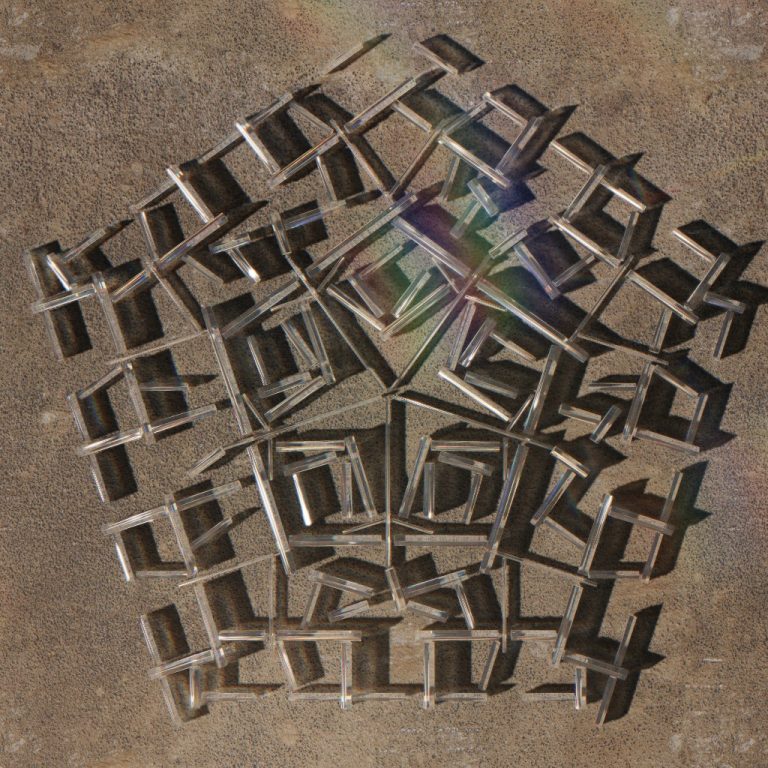Irish artist John Gerard’s generative art series is helping to restore Ireland’s temperate rainforests. Hosted by Feral File, an online digital art platform founded in 2020, the series is titled “Crystallized Works.” Dozens of collectible digital works will be available every day over the next 12 months. It will be available on June 18th.
“This work is first and foremost an experiment,” Gerard told Art News“In a virtual world on an Arctic floating bridge, a robot—which I call the Prism Robot because its surface changes color every millisecond—is creating 24 works every day from the 2024 summer solstice to the 2025 summer solstice. The artworks are derived from a JavaScript ice-generating algorithm I found online 20 years ago.”
Gerard described the project as a “global data performance.” When asked what exactly that meant, he explained that it was “a public work of art that anyone on the planet can access with a browser.”
A link on the Feral File website leads to a video of digital robots diligently executing algorithms in real time to create “crystal rod lattices.” Once completed, the lattices will be added to the Feral File gallery as “unique, dynamic, tokenized 3D Web Graphics Library (WebGL) artwork,” according to the platform’s announcement.
By next year’s summer solstice, 8,760 artworks will have been created, each of which will be tokenized on the Ethereum blockchain and sold for $100, or 0.026 ETH. “Collectors can string these works together using the Feral File app to create longer performances,” the platform noted in its announcement.
Digital artists including Refik Anadol, Lu Yang, Rick Silva and 0xDEAFBEEF have all exhibited at Feral File, which is dedicated to providing “a new type of collecting experience that connects otherwise disparate and previously unconnected artists, curators and collectors”.
25% of the profits from “The Crystal Works” will be donated to Hometree, a charity dedicated to restoring the 4,000 acres of rainforest lost in Connemara, Ireland.
“John’s commitment to supporting the natural world was hugely significant and will always be remembered,” said Hometree CEO Matt Smith. Art News“We have been working together for three years and each time he has come up with new strategies that often go beyond my understanding of the digital art landscape. This time, as usual, his approach was ambitious, but he delivered. He is an amazing person with a unique mindset and I personally love his art. It is a pleasure to work with someone who has such a deep understanding of the climate crisis and biodiversity loss.”
Every day, the robot creates enough art to fund the planting of 33 trees in Ireland.
Each piece is accompanied by a “Generative Soundtrack of the Year” created in partnership with Tone.js, a company that helps people create interactive music in their browsers. “The soundtrack was inspired by a sound bath, like a Tibetan sound bath. The sounds are higher in the summer and lower in the winter,” Gerard explains. Moreover, he says, “This is not a media piece—it’s not about media. This is a data piece. There’s no recorded element, the sounds come from a choral piece derived from code.”
Embedded in each piece is a 4,000-pixel image file of the resulting crystal lattice, which Gerard calls a “prototype” that can be exported and printed on paper. Also embedded in each piece is a 3D model of the unique crystal arrangement, “which can be exported for 3D printing or virtual world building.”
“John has been pushing the boundaries of art for decades, and ‘Crystallized Works’ is his most ambitious and thought-provoking work to date,” said Feral File co-founder Casey Reas in a statement. “From the idea to the final simulation, and to its direct impact on the restoration of Ireland’s temperate rainforest, this is a beautiful work.”


